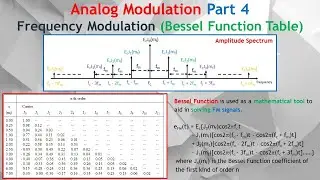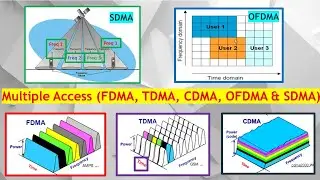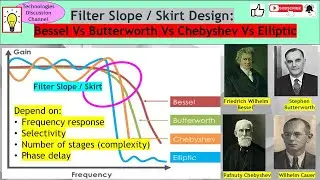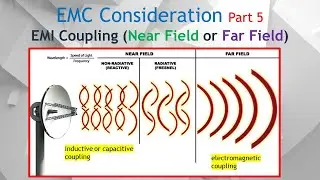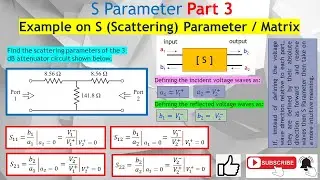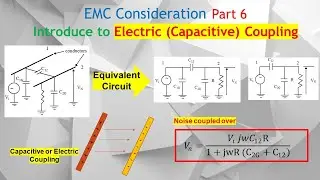SatComm Part 2. GEO, MEO, LEO: The Satellite Trio Powering Your World Serve Different Applications.
Satellite Communication playlist.
• SatComm Part 1: The Evolution of Spac...
The difference between 1) Geosynchronous Orbit (GEO), 2) Medium Earth Orbit (MEO), and 3) Low Earth Orbit (LEO) lies in their altitude, purpose, and characteristics:
Geosynchronous Orbit (GEO)
Altitude: ~35,786 km above Earth
Orbital Period: 24 hours (matches Earth's rotation)
Characteristics: Satellites in GEO stay fixed relative to a point on Earth, making them ideal for telecommunications, weather monitoring, and broadcasting.
Medium Earth Orbit (MEO)
Altitude: ~2,000 to 35,786 km
Orbital Period: ~2 to 12 hours
Characteristics: Used for navigation systems like GPS, communication satellites, and Earth observation. Offers a balance between coverage and latency.
Low Earth Orbit (LEO)
Altitude: ~160 to 2,000 km
Orbital Period: ~90 to 120 minutes
Characteristics: Satellites in LEO move quickly and require constellations for continuous coverage. Used for Earth observation, remote sensing, and low-latency communications (e.g., Starlink).
Satellites in geostationary orbit (GEO) fly 35,786 km above Earth’s equator, moving from west to east, exactly matching Earth’s rotation: taking 23 hours 56 minutes and 4 seconds to complete one full orbit, i.e. the duration of a sidereal day.
This makes GEO satellites appear ‘stationary’ over one fixed spot. To keep pace with Earth’s spin, they travel at about 3 km per second at an altitude of 35 786 km, much farther than most satellites.
GEO is ideal for satellites that need to stay fixed above a specific location, such as telecommunication satellites, allowing antennas on Earth to remain in a constant position, always pointing at the satellite. It is also valuable for weather satellites, enabling continuous monitoring of specific regions to track evolving weather patterns over time and observe how weather trends emerge.
Satellites in GEO can cover a large portion of the Earth; just three evenly spaced satellites can provide near-global coverage. Their high altitude allows them to observe larger areas, much like how stepping back from a map lets you see more of it compared to having your nose right up against it. To achieve full Earth coverage from GEO, far fewer satellites are needed than at lower altitudes.
Geosynchronous Orbit (GEO) because of it fixed position makes it ideal for telecommunications (such as satellite TV), weather forecasting and various defense and intelligence operations, as it enables continuous monitoring of a region from a stationary satellite perspective.
ESA’s European Data Relay System (EDRS) program consists of a constellation of GEO satellites that relay information and data between non-GEO satellites, spacecraft, and ground stations that would otherwise be unable to permanently transmit or receive data. This ensures that Europe remains continuously connected and online, even with satellites in lower orbits that have limited visibility from the ground.
Advantages
Only 3 satellites are required to provide global coverage
Footprints on the earth are fixed and large
No tracking system at the earth stations (For geostationary satellites)
No variation of propagation delay, azimuth and elevation angle (for the case of a geostationary satellite)
Disadvantages
High propagation delays because of the long satellite-user distance (for the signal to travel up to the satellite and then down to the earth station again, it travels 36,000 x2 = 72,000 km. With a speed of 3 x 108 m/s, the signal will takes 240 ms)
Low minimum elevation angles at high latitudes (those places near to the north and south poles)
Polar regions cannot be covered
Medium Earth Orbit (MEO) covers a wide range of altitudes, anywhere between LEO and GEO. Like LEO, satellites in MEO do not need to follow specific paths around Earth, and the orbit is used by a variety of satellites for many different purposes.
A low Earth orbit (LEO) relatively close to Earth’s surface, ranging from 320 to 800 km in altitude. The lower limit for a satellite’s altitude is determined by the impact of Earth’s atmosphere. Generally, satellites do not fly below 180 km for this reason—low compared to most orbits but still far above Earth’s surface. For comparison, most commercial airplanes do not fly higher than approximately 12 km, meaning even the lowest LEO is more than ten times higher.
Смотрите видео SatComm Part 2. GEO, MEO, LEO: The Satellite Trio Powering Your World Serve Different Applications. онлайн, длительностью часов минут секунд в хорошем качестве, которое загружено на канал Technologies Discussion 03 Февраль 2025. Делитесь ссылкой на видео в социальных сетях, чтобы ваши подписчики и друзья так же посмотрели это видео. Данный видеоклип посмотрели 216 раз и оно понравилось 14 посетителям.










